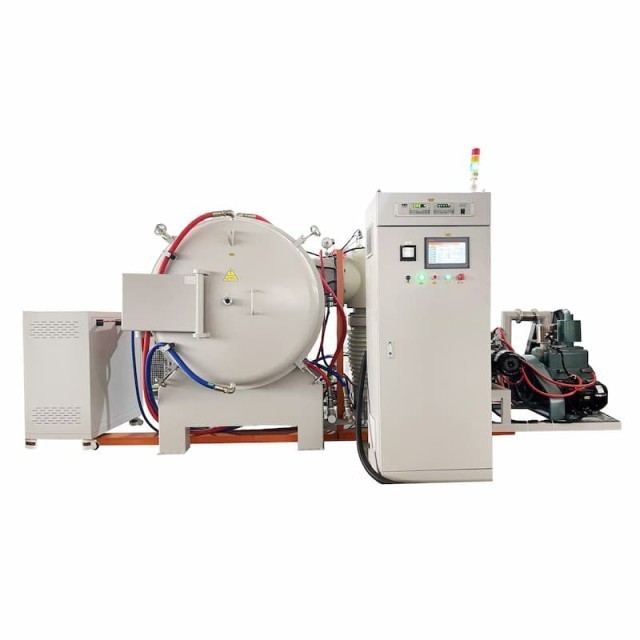
Vacuum Furnace
Molybdenum Vacuum Heat Treat Furnace
Item Number : KT-VM
Price varies based on specs and customizations
- Max. temperature
- 1400 ℃
- Heating rate
- 0-10℃/min
- Temperature control accuracy
- ±1℃
Shipping:
Contact us to get shipping details Enjoy On-time Dispatch Guarantee.
Why Choose Us
Reliable PartnerEasy ordering process, quality products, and dedicated support for your business success.
Molybdenum Vacuum Furnace: Precision High-Temperature Processing
A molybdenum vacuum furnace is a specialized high-temperature heat treatment system engineered for demanding industrial and laboratory applications. It employs robust molybdenum foil as its heating element and operates within a controlled vacuum environment to safeguard materials from contamination. This design ensures exceptional high-temperature stability, superior vacuum performance, efficient thermal transfer, and long-term durability, making it ideal for processes where material purity and precise atmospheric control are paramount.
Key Features & Benefits
- Superior High-Temperature Stability: Guarantees consistent heating temperatures (up to 1400 °C) for reliable and repeatable heat treatment processes, even under the most demanding operational conditions.
- Exceptional Vacuum Integrity: Maintains a high, clean vacuum level, effectively preventing contamination and ensuring the purity and integrity of the materials being processed.
- Optimized Thermal Efficiency: The molybdenum heating elements facilitate rapid heating rates and excellent thermal uniformity throughout the chamber, enhancing overall process efficiency and throughput.
- Robust and Durable Construction: Engineered with high-quality molybdenum components that exhibit excellent resistance to extreme temperatures and oxidation, ensuring prolonged furnace life and minimizing maintenance.
Detail & Parts
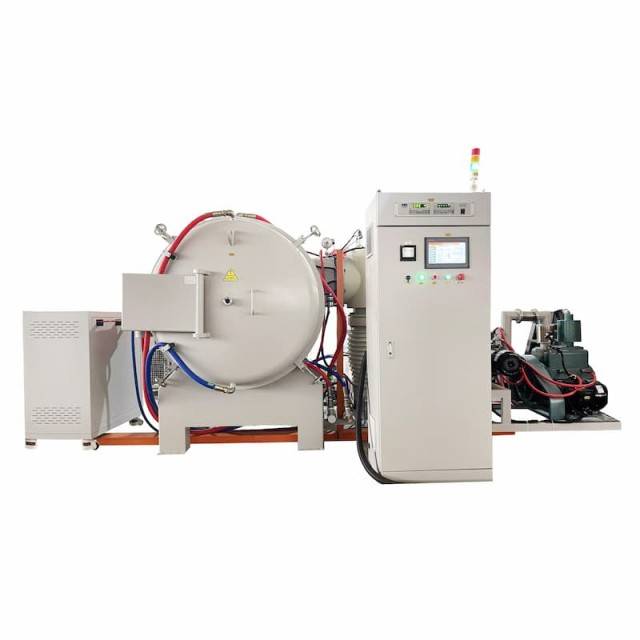
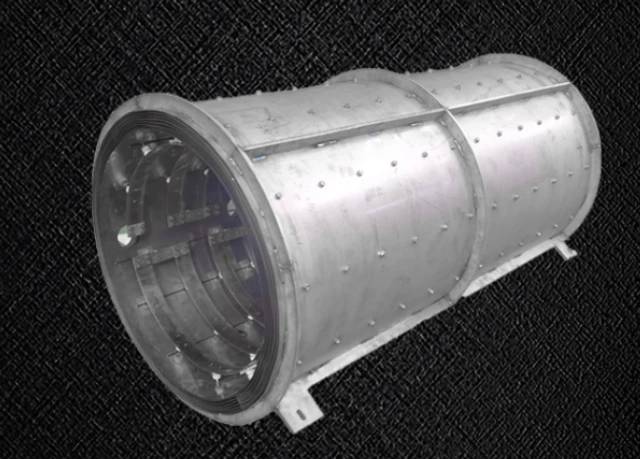
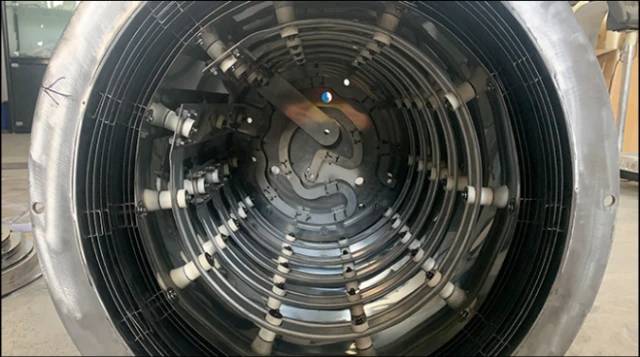
Small thermal expansion; High melting point; High thermal conductivity.
Technical Specifications
| Furnace model | KT-VM | ||
| Max. temperature | 1400 ℃ | ||
| Constant work temperature | 1300 ℃ | ||
| Chamber insulation material | molybdenum heat shield | ||
| Heating element | Molybdenum Strip | ||
| Heating rate | 0-10℃/min | ||
| Temperature sensor | Build in S type thermal couple | ||
| Temperature controller | Touch screen PID controller with PLC | ||
| Temperature control accuracy | ±1℃ | ||
| Temperature uniformity | ±5℃ | ||
| Electric power supply | AC110-440V,50/60HZ | ||
| Standard Chamber Sizes Stocks | |||
| Chamber size (mm) | Effective volume (L) | Chamber size (mm) | Effective volume (L) |
| 150x150x200 | 4.5 | 400x400x500 | 80 |
| 200x200x300 | 12 | 500x500x600 | 125 |
| 300x300x400 | 36 | 600x600x700 | 253 |
| Custom design sizes and volume are accepted. Inquire about your custom requirements. | |||
Versatile Applications
The molybdenum vacuum furnace is extensively used across various high-tech fields, including but not limited to:
- Vacuum sintering of metals and ceramics
- Vacuum brazing of complex assemblies
- Sapphire crystal growth and annealing
- Specialized brazing operations
- Advanced heat treatment processes
- Casting of precision aircraft components
- Refining of high-purity metals and alloys
- Production of electrodes for remelting
- Powder roasting and calcination
- Ceramic sintering and densification
- High-temperature material experiments
- Critical material treatment under vacuum
- High-temperature atmosphere sintering (with appropriate modifications)
- Ceramic glue discharge and debinding
- Flue gas treatment research
- Annealing and sintering processes requiring stringent atmospheric control
Operating Principle
The molybdenum vacuum furnace leverages the exceptional high-temperature resistance and vacuum compatibility of molybdenum foil. This foil serves as both the heating element and furnace liner. The system operates by creating a high-temperature vacuum environment through resistive heating of the molybdenum foil. This design effectively isolates the processed materials from external contaminants and allows for precise temperature control, crucial for high-temperature heat treatment processes in a clean, controlled atmosphere.
Advanced Safety Systems
- Kindle Tech vacuum furnaces are equipped with over-current protection and over-temperature alarm functions; the furnace will automatically shut off power if limits are exceeded.
- An integrated thermocouple detection function monitors sensor integrity; the furnace will stop heating and trigger an alarm if a thermocouple break or failure is detected.
- Features a power failure restarting function, allowing the furnace to resume the heating program automatically once power is restored after an outage.
Optional Configurations
Enhance your furnace to meet specific experimental needs with options such as:
- Independent furnace temperature monitoring and recording systems
- RS 485 communication port for PC remote control and data exporting
- Pneumatic vacuum valve linkage with the temperature controller for automated operation
- Advanced touch screen temperature controller with versatile, operator-friendly functions
- Cold water circulation cooling machine for efficient furnace shell jacket cooling
Partner with KINTEK for Your High-Temperature Furnace Needs
Leveraging exceptional R&D and in-house manufacturing, KINTEK provides diverse laboratories with advanced high-temperature furnace solutions. Our product line, including Muffle, Tube, Rotary Furnaces, Vacuum & Atmosphere Furnaces (like this Molybdenum Vacuum Furnace), and CVD/PECVD/MPCVD Systems, is complemented by our strong deep customization capability to precisely meet unique experimental requirements.
Ready to find the perfect furnace solution or need a custom design? Our team of experts is here to assist you. Contact KINTEK today to discuss your project or request a quote!
Precautions and Maintenance
The molybdenum foil vacuum furnace consists of key components such as the furnace chamber, molybdenum strips, vacuum gauge, vacuum system, and water cooler. The following precautions and maintenance guidelines should be observed to ensure optimal performance and longevity:
| Furnace Chamber |
|
|
|---|---|---|
| Molybdenum Strips Heater |
|
|
| Pirani Gauge and Ionisation Gauge |
|
|
| Mechanical Pump |
|
|
| Roots Pump |
|
|
| Diffusion Pump |
|
|
| Water Cooler |
|
|
In summary, the molybdenum foil vacuum furnace is an efficient, stable, durable, and safe device. Diligent adherence to regular vacuum maintenance, safe operation protocols, and preventative maintenance practices are essential for ensuring its long-term stable operation and maximizing your return on investment.
FAQ
What Are The Main Applications Of A Vacuum Furnace?
What Is An Atmosphere Furnace Used For?
What Are The Main Applications Of A Horizontal Vacuum Furnace?
What Is A Vacuum Induction Furnace?
What Are The Key Features Of A Vacuum Furnace?
What Are The Key Features Of An Atmosphere Furnace?
What Are The Key Features Of A Horizontal Vacuum Furnace?
What Are The Main Applications Of Vacuum Induction Furnaces?
How Does A Vacuum Furnace Work?
How Does An Atmosphere Furnace Work?
How Does A Horizontal Vacuum Furnace Work?
How Does A Vacuum Induction Furnace Work?
What Are The Advantages Of Using A Vacuum Furnace?
What Are The Advantages Of Using An Atmosphere Furnace?
What Are The Advantages Of Using A Horizontal Vacuum Furnace?
What Are The Advantages Of Using A Vacuum Induction Furnace?
What Types Of Materials Can Be Processed In A Vacuum Furnace?
What Types Of Gases Can Be Used In An Atmosphere Furnace?
What Types Of Materials Can Be Processed In A Horizontal Vacuum Furnace?
What Types Of Vacuum Induction Furnaces Are Available?
What Is The Difference Between Hot Wall And Cold Wall Vacuum Furnaces?
What Safety Features Are Available In Advanced Atmosphere Furnaces?
What Is The Temperature Range Of A Horizontal Vacuum Furnace?
Why Is Temperature Control Important In Vacuum Induction Furnaces?
Can Vacuum Furnaces Be Customized For Specific Applications?
What Materials Can Be Processed In A Vacuum Induction Furnace?
How Does The Vacuum Environment Benefit Material Processing?
4.9
out of
5
Incredible precision and durability—this furnace outperforms competitors effortlessly!
4.8
out of
5
Fast delivery and top-notch quality. Worth every penny!
4.7
out of
5
The technological advancement in this furnace is mind-blowing. Highly recommend!
4.9
out of
5
Exceptional build quality and efficiency. A game-changer for our lab!
4.8
out of
5
Reliable and consistent performance. Perfect for high-temperature applications.
4.9
out of
5
The furnace arrived sooner than expected and works flawlessly. Impressed!
4.7
out of
5
Great value for money. The furnace handles heavy use without issues.
4.8
out of
5
Superior heat treatment results with minimal energy consumption. Love it!
4.9
out of
5
The durability of this furnace is unmatched. A solid investment!
4.8
out of
5
Easy to operate and maintain. Perfect for our production needs.
4.9
out of
5
Cutting-edge technology with reliable performance. A must-have!
4.7
out of
5
Fast shipping and excellent customer service. The furnace is a beast!
4.8
out of
5
Consistent results every time. This furnace is a workhorse!
4.9
out of
5
The precision and control are outstanding. Worth every cent!
4.8
out of
5
High-quality materials and superb craftsmanship. Very satisfied!
4.7
out of
5
Efficient and reliable. Perfect for our research projects.
4.9
out of
5
The furnace’s performance exceeds expectations. A stellar product!
4.8
out of
5
Quick setup and incredible results. This furnace is a winner!
REQUEST A QUOTE
Our professional team will reply to you within one business day. Please feel free to contact us!
Related Products

600T Vacuum Induction Hot Press Vacuum Heat Treat and Sintering Furnace
600T Vacuum Induction Hot Press Furnace for precise sintering. Advanced 600T pressure, 2200°C heating, vacuum/atmosphere control. Ideal for research & production.
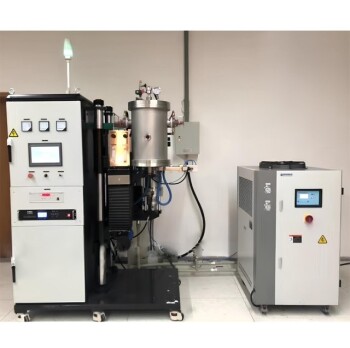
Vacuum Heat Treat Sintering Furnace Molybdenum Wire Vacuum Sintering Furnace
KINTEK's Vacuum Molybdenum Wire Sintering Furnace excels in high-temperature, high-vacuum processes for sintering, annealing, and material research. Achieve precise 1700°C heating with uniform results. Custom solutions available.

Small Vacuum Heat Treat and Tungsten Wire Sintering Furnace
Compact vacuum tungsten wire sintering furnace for labs. Precise, mobile design with superior vacuum integrity. Ideal for advanced material research. Contact us!

9MPa Air Pressure Vacuum Heat Treat and Sintering Furnace
Achieve superior ceramic densification with KINTEK's advanced air pressure sintering furnace. High-pressure up to 9MPa, precise 2200℃ control.

Vacuum Heat Treat Sintering and Brazing Furnace
KINTEK Vacuum Brazing Furnaces deliver precision, clean joints with superior temperature control. Customizable for diverse metals, ideal for aerospace, medical, and thermal applications. Get a quote!

Vacuum Heat Treat Furnace with Ceramic Fiber Liner
KINTEK's Vacuum Furnace with Ceramic Fiber Lining offers precise high-temperature processing up to 1700°C, ensuring uniform heat distribution and energy efficiency. Ideal for labs and production.

Vacuum Hot Press Furnace Machine Heated Vacuum Press Tube Furnace
Discover KINTEK's advanced Vacuum Tube Hot Press Furnace for precise high-temperature sintering, hot pressing, and material bonding. Customizable solutions for labs.

2200 ℃ Graphite Vacuum Heat Treat Furnace
2200℃ Graphite Vacuum Furnace for high-temperature sintering. Precise PID control, 6*10⁻³Pa vacuum, durable graphite heating. Ideal for research & production.

Vacuum Heat Treat Sintering Furnace with Pressure for Vacuum Sintering
KINTEK's Vacuum Pressure Sintering Furnace offers 2100℃ precision for ceramics, metals, and composites. Customizable, high-performance, and contamination-free. Get a quote now!

2200 ℃ Tungsten Vacuum Heat Treat and Sintering Furnace
2200°C Tungsten Vacuum Furnace for high-temperature materials processing. Precise control, superior vacuum, customizable solutions. Ideal for research & industrial applications.

Split Chamber CVD Tube Furnace with Vacuum Station CVD Machine
Split Chamber CVD Tube Furnace with Vacuum Station - High precision 1200°C lab furnace for advanced materials research. Customizable solutions available.

Custom Made Versatile CVD Tube Furnace Chemical Vapor Deposition CVD Equipment Machine
KINTEK's CVD Tube Furnace offers precision temperature control up to 1600°C, ideal for thin film deposition. Customizable for research and industrial needs.

Multi Heating Zones CVD Tube Furnace Machine for Chemical Vapor Deposition Equipment
KINTEK's Multi-Zone CVD Tube Furnaces offer precision temperature control for advanced thin film deposition. Ideal for research and production, customizable for your lab needs.
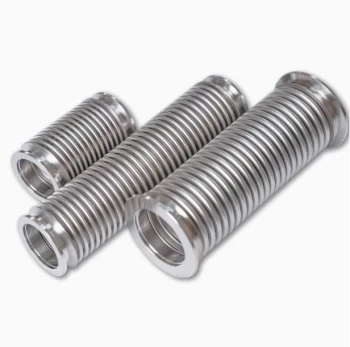
High Performance Vacuum Bellows for Efficient Connection and Stable Vacuum in Systems
KF ultra-high vacuum observation window with high borosilicate glass for clear viewing in demanding 10^-9 Torr environments. Durable 304 stainless steel flange.

Spark Plasma Sintering SPS Furnace
Discover KINTEK's advanced Spark Plasma Sintering (SPS) Furnace for rapid, precise material processing. Customizable solutions for research and production.
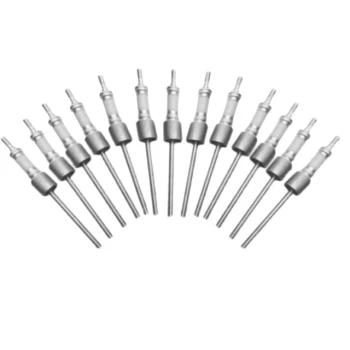
Ultra Vacuum Electrode Feedthrough Connector Flange Power Lead for High Precision Applications
Ultra-Vacuum Electrode Feedthroughs for reliable UHV connections. High-sealing, customizable flange options, ideal for semiconductor & space applications.

CF KF Flange Vacuum Electrode Feedthrough Lead Sealing Assembly for Vacuum Systems
Reliable CF/KF flange vacuum electrode feedthrough for high-performance vacuum systems. Ensures superior sealing, conductivity & durability. Customizable options available.
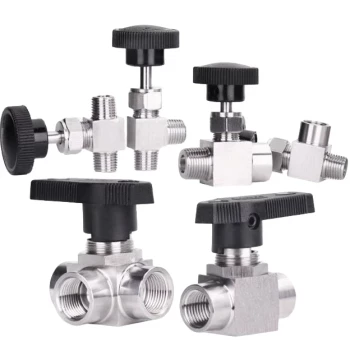
304 316 Stainless Steel High Vacuum Ball Stop Valve for Vacuum Systems
KINTEK's 304/316 stainless steel vacuum ball valves and stop valves ensure high-performance sealing for industrial and scientific applications. Explore durable, corrosion-resistant solutions.

Vacuum Hot Press Furnace Machine Heated Vacuum Press
KINTEK Vacuum Hot Pressing Furnace: Precision heating & pressing for superior material density. Customizable up to 2800°C, ideal for metals, ceramics, and composites. Explore advanced features now!
Related Articles

Your Vacuum Furnace Is a System, Not a Component—Here’s Why That Changes Everything
Struggling with inconsistent high-temperature vacuum processes? Discover why a bigger pump isn't the answer and how an integrated system approach is key.

Why Your Vacuum Furnace Failed After the Lab Move—And How to Prevent It
Discover why vacuum furnaces often fail after being moved and how robust engineering prevents costly damage to seals and components. Protect your investment.

Why Your High-Purity Metals Oxidize in a Perfect Vacuum—And How to Stop It
Frustrated by oxidized metals from your vacuum furnace? Discover the real culprit isn't the vacuum but the cooling phase, and how to fix it.

Why Your High-Precision Parts Warp—And How to Stop It for Good
Struggling with part distortion in high-precision assemblies? Discover the root cause—thermal gradients—and how vacuum brazing provides the definitive solution.

Your Furnace Reached Temperature. So Why Did Your Experiment Fail?
Discover the hidden reason your high-temperature vacuum experiments fail despite hitting specs. Learn how heating element choice impacts purity and success.

The Real Reason Your High-Performance Materials Are Failing (And It’s Not the Alloy)
Tired of inconsistent heat treatment? Discover the two invisible culprits sabotaging your materials and how a vacuum furnace provides the control to fix it for good.

Why Your High-Temperature Experiments Are Failing—And It's Not What You Think
Frustrated with inconsistent results from your furnace? Discover why max temperature isn't the problem and how to achieve perfect thermal uniformity.

Why Your High-Temperature Furnace Fails: It’s Not the Heating Element, It’s the Physics
Tired of replacing burnt-out furnace heating elements? Discover the hidden thermal physics that causes premature failure and learn how a systems approach ensures reliability.

Your Process is Perfect. Why Are Your Furnace Results Failing?
Discover the hidden reason your high-temperature furnace delivers inconsistent results and why "standard" features aren't enough for advanced applications.

How Vacuum Hot Press Furnaces Transform Advanced Material Engineering
Vacuum hot press furnaces enable precise material synthesis for aerospace, electronics, and energy sectors, enhancing density, strength, and reliability.

Why Your High-Temperature Experiments Fail: It’s Not Bad Luck, It’s Your Furnace
Are inconsistent results from your high-temperature furnace derailing your research? Discover the hidden design flaws that cause failures and how to fix them for good.

The Invisible Saboteur: Why Your High-Temp Furnace Fails (And How to Stop It)
Frustrated by recurring furnace failures and short circuits? Discover the hidden cause—metallic vapor deposition—and learn how a furnace truly designed for your process can end the cycle for good.